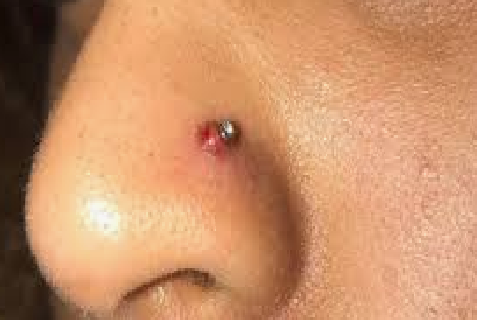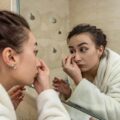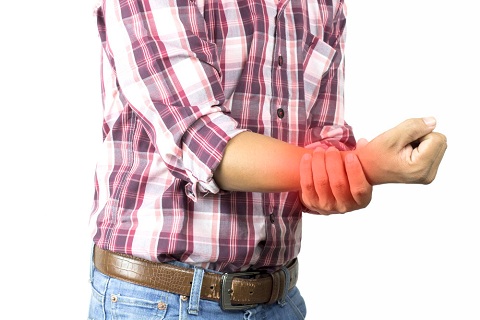Nose piercing has been a popular form of body modification for centuries, with its origins dating back to ancient cultures. However, one common concern that many individuals face after getting a nose piercing is the development of nose piercing bumps. These bumps, also known as piercing bumps or keloids, can be a source of frustration and discomfort. In this comprehensive guide, we’ll delve into the causes of nose piercing bumps, how to identify them, and most importantly, effective removal methods to help you achieve a flawless piercing.
What Causes Nose Piercing Bumps?
Nose piercing bumps can occur due to various reasons, ranging from poor piercing techniques to individual skin reactions. Here are some common causes:
- Infection: Bacterial or fungal infections can lead to the formation of bumps around the piercing site.
- Allergic Reactions: Some individuals may experience allergic reactions to the metal used in their nose jewelry, leading to irritation and bumps.
- Trauma: Accidental trauma or excessive touching of the piercing can cause irritation and bump formation.
- Poor Aftercare: Inadequate cleaning and care of the piercing can contribute to infection and bump development.
Identifying Nose Piercing Bumps
It’s essential to differentiate between normal healing processes and problematic bumps. Here’s how you can identify nose piercing bumps:
- Keloid Bumps: These are raised, firm bumps that extend beyond the piercing site. They can be itchy and painful.
- Granulomas: These are small, red bumps that may contain pus or fluid. They are often sensitive to touch.
- Hypertrophic Scars: Similar to keloids, these bumps are raised but tend to stay within the boundaries of the piercing site.
Symptoms of Nose Piercing Bumps
Nose piercing bumps can manifest in various ways, and the symptoms may differ depending on the cause. Here’s an overview of common symptoms associated with nose piercing bumps:
- Redness: The skin around the piercing site may appear red or inflamed, indicating irritation or infection.
- Swelling: Bumps can cause localized swelling, making the area around the piercing feel tender or sore.
- Pain: Discomfort or pain, especially when touching or moving the piercing, is a common symptom of nose piercing bumps.
- Pus or Discharge: Bumps that contain pus or discharge may indicate an infection and require prompt attention.
- Itching: Some individuals may experience itching around the piercing site, which can be a sign of healing or irritation.
- Raised Bumps: Keloids or hypertrophic scars may form raised, firm bumps that extend beyond the piercing site.
- Whiteheads: In cases of infection, whiteheads or small pustules may develop on or around the bump.
It’s essential to monitor these symptoms closely and consult with a piercer or healthcare professional if you notice any concerning changes or persistent symptoms.
Effective Removal Methods
Now, let’s explore effective methods for removing nose piercing bumps and restoring the beauty of your piercing:
- Proper Cleaning: Maintaining good hygiene is crucial. Use a gentle saline solution to clean the piercing twice a day.
- Avoiding Irritants: Identify and avoid any allergens or irritants that may be causing the bumps. Switch to hypoallergenic jewelry if necessary.
- Warm Compress: Applying a warm compress to the bump can help reduce inflammation and promote healing.
- Topical Treatments: Consult with a dermatologist for topical treatments such as steroid creams or silicone sheets to flatten keloids or hypertrophic scars.
- Professional Removal: In severe cases, a dermatologist or piercing professional may recommend laser therapy or surgical removal of the bump.
Preventing a nose piercing bump
Preventing nose piercing bumps is a crucial aspect of ensuring a smooth healing process and maintaining the beauty of your piercing. In this guide, we’ll delve into effective strategies and tips to help you avoid the development of bumps around your nose piercing.
1. Choose a Professional Piercer
One of the most critical steps in preventing nose piercing bumps is to choose a professional and experienced piercer. Ensure that they use sterile equipment and follow hygienic practices during the piercing procedure. A skilled piercer will also guide you on proper aftercare techniques.
2. Opt for High-Quality Jewelry
The type of jewelry you choose for your nose piercing can significantly impact its healing process. Opt for high-quality, hypoallergenic materials such as surgical stainless steel, titanium, or niobium. Avoid using cheap or low-grade jewelry that may contain irritants.
3. Avoiding Trauma
Protect your piercing from trauma or injury. Avoid activities or sports that may involve direct impact to your nose. Be cautious when changing clothes or using towels near the piercing site to prevent accidental pulling or tugging.
4. Regular Check-ups
Schedule regular check-ups with your piercer or a dermatologist to ensure that your piercing is healing properly. They can provide guidance, assess any issues, and recommend adjustments if necessary.
By following these preventive measures and maintaining diligent aftercare, you can significantly reduce the risk of developing nose piercing bumps and enjoy a smooth healing process.
When to see a doctor or piercer
You should consider seeing a doctor or a professional piercer if you experience any of the following concerning symptoms related to nose piercing bumps:
- Persistent Pain: If the bump is causing ongoing pain or discomfort, it’s advisable to seek medical attention. Persistent pain may indicate an underlying issue such as infection or allergic reaction.
- Increased Redness or Swelling: If the redness and swelling around the piercing site worsen or spread beyond the immediate area, it could be a sign of infection. Prompt medical evaluation is recommended in such cases.
- Pus or Discharge: Bumps that discharge pus or fluid, especially if accompanied by a foul odor or unusual color, may indicate an infection that requires professional treatment.
- Changes in Appearance: Any changes in the appearance of the bump, such as rapid growth, changes in color, or the development of additional symptoms like fever or chills, should prompt a visit to a healthcare provider.
- Persistent Itching or Irritation: While some itching is normal during the healing process, persistent itching or irritation that does not improve with proper care may indicate an issue that needs assessment.
- Failure to Improve: If the bump does not show signs of improvement despite following recommended aftercare practices for an extended period, consulting with a piercer or doctor can help identify the underlying cause and appropriate treatment.
It’s essential to address any concerns promptly to prevent complications and ensure the proper healing of your nose piercing.
Frequently Asked Question about Nose Piercing Bumps
It’s not uncommon to experience a nose piercing bump during the healing process. However, it’s essential to monitor it closely and seek professional advice if you notice any concerning symptoms or if the bump persists.
Accidentally bumping your nose piercing can cause irritation or trauma to the piercing site. While minor bumps may not be harmful, repeated or forceful impacts can lead to complications. It’s best to be cautious and gentle with your piercing to avoid unnecessary discomfort or problems.
Piercing bumps can fade over time with proper care and treatment. Following recommended aftercare practices, such as cleaning the piercing regularly with saline solution and avoiding irritants, can help promote healing and reduce the appearance of bumps.
Closing a nose piercing hole permanently typically requires professional intervention. A dermatologist or piercer can perform a procedure to close the hole surgically or with specialized techniques. It’s essential to consult with a professional for safe and effective closure of the piercing hole.
Conclusion
Understanding nose piercing bumps and effective removal methods is essential for maintaining a healthy and beautiful piercing. By following proper aftercare practices and seeking professional help when needed, you can overcome bumps and enjoy your nose piercing to the fullest.





